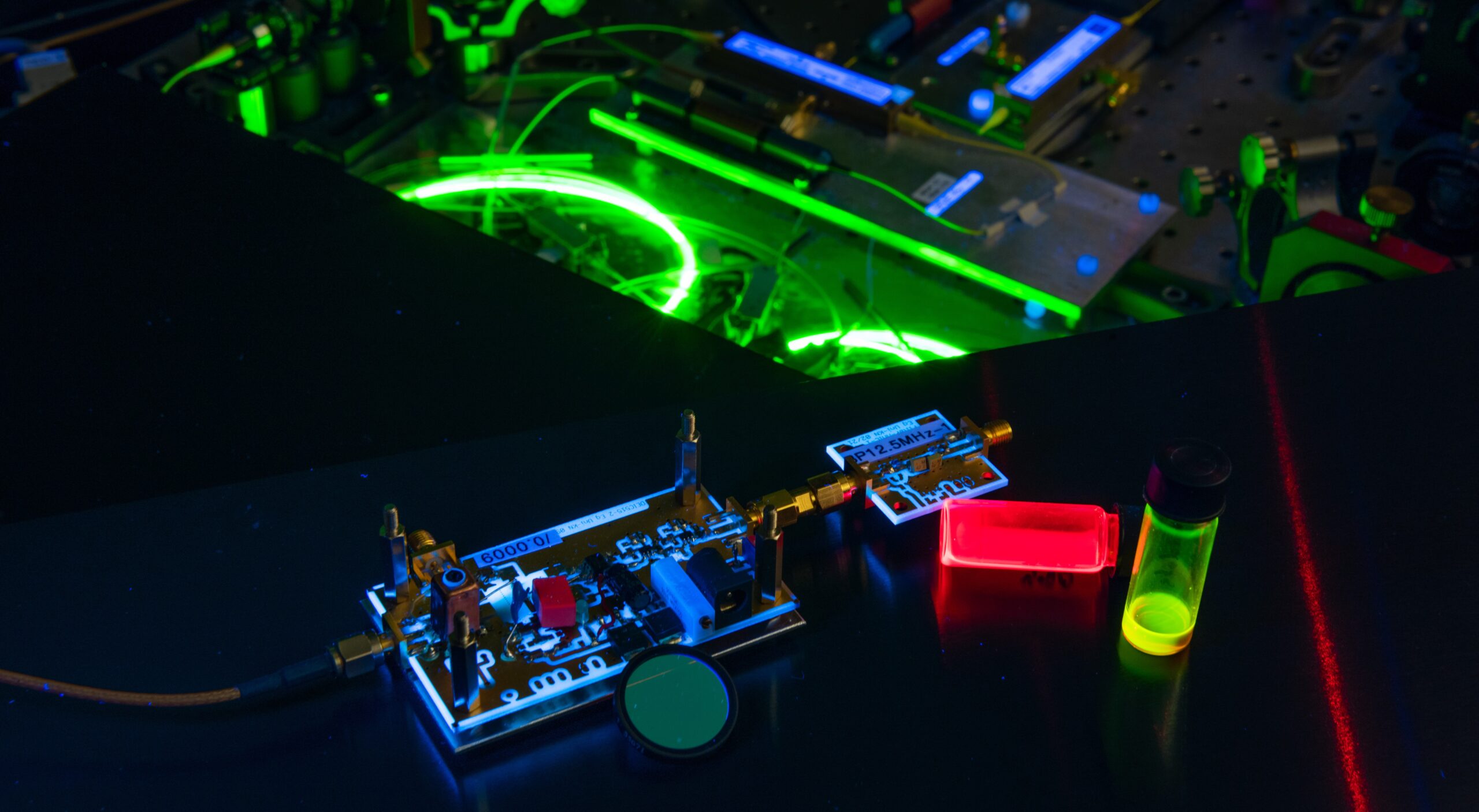While much of the electronic dynamics in quantum emitters occurs at the nanosecond time scale and can be resolved with heralded spectroscopy techniques (“fast spectroscopy”), many open questions in this area still revolve around the first few femtoseconds (10^-15 seconds) or picosecond (10^-12 second) after the absorption of a photon. Experimentally, the most natural way to study such dynamics is through an interaction with ultrashort pulses of light (“ultrafast spectroscopy”). More precisely, the most suitable way to probe these ultrafast processes is ultrafast optical pump-probe spectroscopy. Following a short laser excitation pulse, a probe pulse measures the state of the emitter at a specific time delay.
While this technique produced important answers to fundamental questions at the level of an ensemble of molecules and nanoparticles, applying it to a single nanocrystal turns out to be extremely challenging. A single quantum dot interacts at most with one out of 10^4-10^5 photons, requiring very long acquisitions with high precision in space and time. Alas, most of the interesting quantum phenomenon cannot be observed when inspecting a heterogeneous ensemble of nano emitters.
At the Leitenstofer chair in the University of Konstanz (which our group is a part of), a unique pump-probe microscopy setup was developed to tackle precisely this challenge. To remove parasitic effects (such as thermal contributions) instead of intermittently switching the pump pulse on and off, we repeatedly change the order between the two pulses [1].

This ‘trick’ together with use of highly stable Er:fiber oscillator and amplifier laser system allowed, for the first time, to observe ultrafast quantum beating of an exciton [2]. Here, the quantum state of the exciton is a superposition of two states whose phase difference oscillates with a period of ~30 picoseconds. This periodicity results from the energy difference between the two states. In other words, we are directly observing the quantum time evolution operator e^-iHt.
Currently, we are experimenting with quantum control of a single quantum dot at an ultrafast time scale. After a short laser pulse generates an excitation, a second control pulse alters the state of the exciton. Finally, a third probe pulse measures the state of the exciton. Control protocols can be applied to quantum information processing and quantum sensing applications. While a quantum dot system cannot compete with the fidelity of a highly evolved qubit systems (e.g. trapped ions, superconducting qubits), it provides an ultrafast platform in which operations may be performed at a rate of tens of gigahertz and quantum sensing protocols can be observe phenomena down to the picosecond regime.
